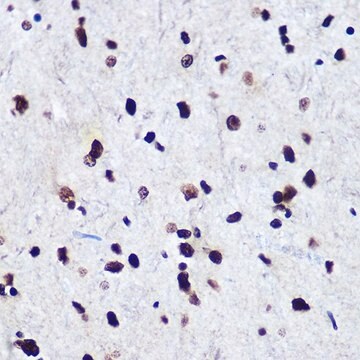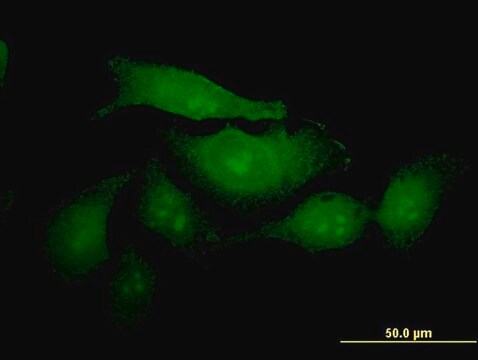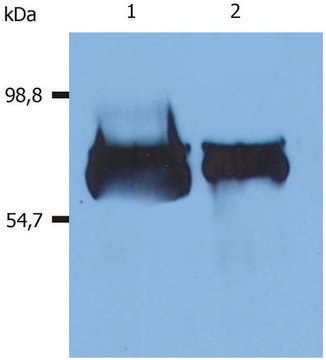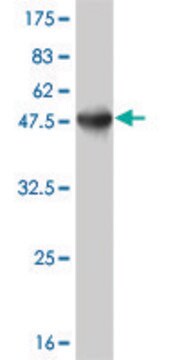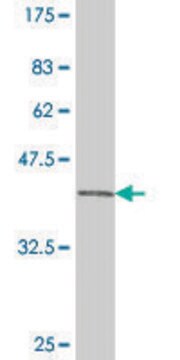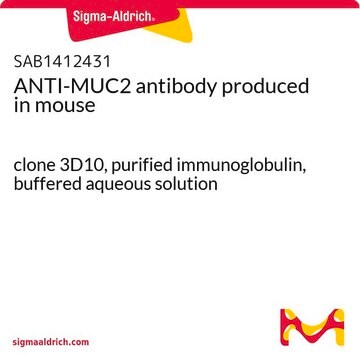SAB1412644
ANTI-ATF3 antibody produced in mouse
clone 7G10, purified immunoglobulin, buffered aqueous solution
Synonym(s):
ATF3
About This Item
Recommended Products
biological source
mouse
conjugate
unconjugated
antibody form
purified immunoglobulin
antibody product type
primary antibodies
clone
7G10, monoclonal
form
buffered aqueous solution
mol wt
antigen 45.65 kDa
species reactivity
human
technique(s)
indirect ELISA: suitable
western blot: 1-5 μg/mL
isotype
IgG1κ
NCBI accession no.
UniProt accession no.
shipped in
dry ice
storage temp.
−20°C
target post-translational modification
unmodified
Gene Information
human ... ATF3(467)
General description
Immunogen
Sequence
MMLQHPGQVSASEVSASAIVPCLSPPGSLVFEDFANLTPFVKEELRFAIQNKHLCHRMSSALESVTVSDRPLGVSITKAEVAPEEDERKKRRRERNKIAAAKCRNKKKEKTECLQKESEKLESVNAELKAQIEELKNEKQHLIYMLNLHRPTCIVRAQNGRTPEDERNLFIQQIKEGTLQS
Biochem/physiol Actions
ATF3 plays bifurcated roles in cancer development by stimulating apoptosis in the untransformed MCF10A (a breast cancer progression cell line) mammary epithelial cells and also conserve aggressive MCF10CA1a cells and promotes its cell motility.
Physical form
Not finding the right product?
Try our Product Selector Tool.
Storage Class Code
10 - Combustible liquids
Flash Point(F)
Not applicable
Flash Point(C)
Not applicable
Certificates of Analysis (COA)
Search for Certificates of Analysis (COA) by entering the products Lot/Batch Number. Lot and Batch Numbers can be found on a product’s label following the words ‘Lot’ or ‘Batch’.
Already Own This Product?
Find documentation for the products that you have recently purchased in the Document Library.
Our team of scientists has experience in all areas of research including Life Science, Material Science, Chemical Synthesis, Chromatography, Analytical and many others.
Contact Technical Service

